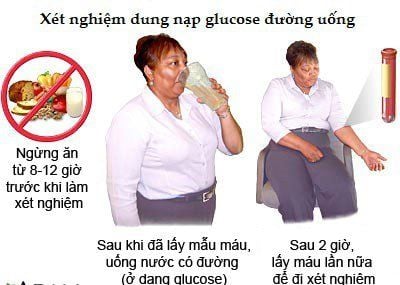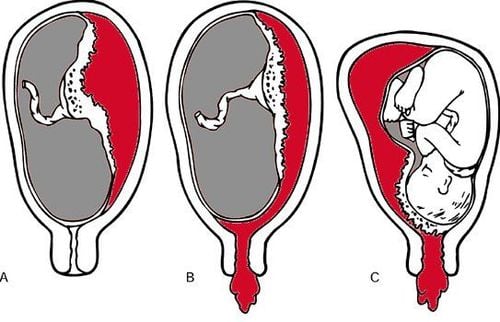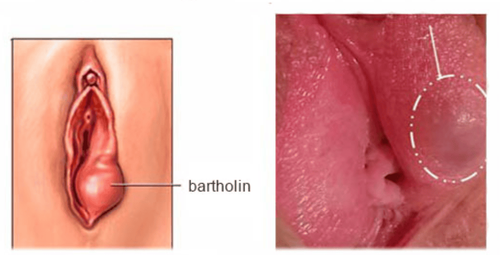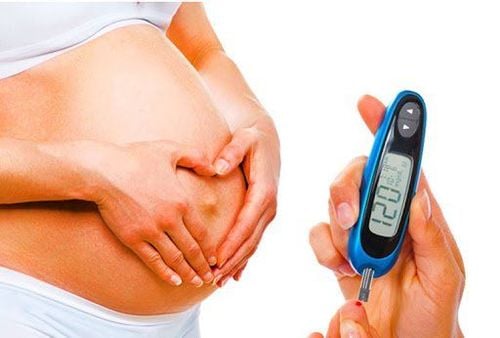This is an automatically translated article.
The article was professionally consulted by Specialist Doctor Obstetrician and Gynecologist - Department of Obstetrics and Gynecology, Vinmec Hai Phong International General Hospital
The oral glucose tolerance test is indicated for the detection of diabetes mellitus or gestational diabetes in pregnant women. Reading the results of the glucose tolerance test shows whether your blood sugar is high or low.
1. What is an oral glucose tolerance test?
Definition The oral glucose tolerance test is used to assess how well the body uses glucose. This is a test to help diagnose pre-diabetes symptoms, clinical diabetes, and especially detect gestational diabetes - a rather dangerous syndrome in pregnant women.
Indications At the first prenatal visit, the obstetrician will give the pregnant woman a blood glucose or HbA1c test to screen for diabetes before pregnancy (clinical diabetes) or during pregnancy ( gestational diabetes) or not. If the results show that the fasting blood glucose is <5.1mmol/L, the pregnant woman should wait until 24-28 weeks of pregnancy to have an oral glucose tolerance test.
In addition to the glycemic index at the first visit above, an oral glucose tolerance test is also indicated in all pregnant women at high risk of gestational diabetes with the following characteristics:
Obesity : The correlation index between height and weight BMI ≥ 30 Age: Usually over 25 years of age Family history: Pregnant women with relatives with diabetes are more at risk Pregnancy history: Ever have gestational diabetes, or give birth to a baby weighing 4.1 kg or more, or have an unexplained stillbirth in a previous pregnancy. Glucose tolerance testing is not indicated in women with established glucose levels. markedly elevated blood pressure through the classic symptoms, or through 2 fasting blood glucose samples > 7.0mmol/L, or people with acute illness, malnutrition, and bedridden for more than 3 days.
Trắc nghiệm dành riêng cho người mắc đái tháo đường: Chế độ ăn của bạn đã hợp lý chưa?
Người bị bệnh đái tháo đường cần phải quan tâm nhiều hơn đến cách tính toán khẩu phần ăn sao cho phù hợp với nhu cầu và tình trạng sức khỏe. Nếu chưa rõ, bạn có thể tìm hiểu kỹ hơn thông qua bài trắc nghiệm ngắn sau đây.Methods Before performing the oral glucose tolerance test, the mother should keep the following notes in mind:
Maintain a normal diet (at least 150g of starch per day) for 3 days before. Tell your doctor about any medications you have taken recently. Certain medications belonging to the glucocorticoid group, diuretics, and beta-blockers may affect the test results. Rest for at least 30 minutes before performing the test. Fast for 10-14 hours (evening), do not smoke, drink coffee until the test is completed. The test is usually done in the morning to draw a patient's blood for fasting blood sugar testing. The mother will be given a sweet solution of 75g glucose for 5 minutes. Then sit still and let the doctor check your blood sugar twice, at 1 and 2 hours after glucose tolerance. Pregnant women can drink filtered water during this time but need to limit exercise and move a lot. In addition to the 75g oral glucose tolerance test, another test that is often done is a 2-step diagnosis through tolerance. 100g oral glucose. During this test, the woman does not need to fast. They will first drink a solution containing 50g of sugar and wait an hour to draw blood. If the blood glucose level is high, specifically > 7.8 mmol/l, the pregnant woman will have to have a follow-up test with 100g of glucose.

2. How to read glucose tolerance test results
Normal blood sugar According to the standards of the Research Group of IADPSG (International Association of Diabetes and Pregnancy) and the American Diabetes Association ADA, the blood glucose level is normal when tested 75 oral glucose tolerance is as follows:
First blood sample: < 5.1 mmol/L (equivalent to 92 mg/dL) 1 hour later: < 10.0 mmol/L (equivalent to 180 mg/dL) 2 hours later: <8.5 mmol/L (equivalent to 153 mg/dL) If blood sugar after 2 hours is between 140-199 mg/dl, pregnant woman is in pre-diabetes state.
High blood sugar If the blood sugar levels are higher than the above normal values, it can be due to the following reasons:
Pregnant women with clinical or gestational diabetes Effects of some medicines, eg: Corticosteroids, Dilantin, diuretics, and medicines for high blood pressure, medicines for HIV/AIDS The mother can have several medical conditions including: hyperthyroidism, iron overload, adrenal myeloma, or Cushing's syndrome (the body has too much of the hormone cortisol). Low blood sugar In contrast, low blood sugar also occurs because of the effects of drugs or disorders in the pregnant woman's body, which can include:
Antidiabetic drugs, high blood pressure stabilizers and antidepressants Addison's syndrome (decreased production of the hormones cortisol and aldosterone). Impaired thyroid or pituitary function Diseases of the liver or pancreas

However, the statistics listed above are for reference only. Because blood glucose levels are normal, high blood sugar levels or low blood sugar levels depend on different standards used by the testing center. The panel of test results received by pregnant women will use ranges of values that are considered normal instead of single values and may vary from country to country. In addition, there are many factors that can change the blood glucose index, such as the health status of the pregnant mother.
Besides, even if a woman is free of gestational diabetes after giving birth to her baby, she is still at risk of recurrence in the next pregnancy, as well as possible clinical diabetes. after. Therefore, medical professionals recommend that the mother repeat the oral glucose tolerance test about 6-12 weeks after delivery or when breastfeeding is stopped. If the results show normal blood sugar levels, it is still a good idea to get screened for diabetes at least every 3 years.
Please dial HOTLINE for more information or register for an appointment HERE. Download MyVinmec app to make appointments faster and to manage your bookings easily.













